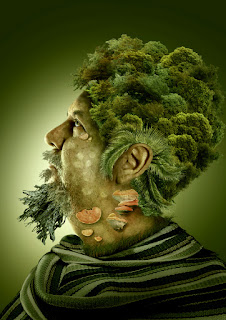How shall I appreciate You, Mother Nature?
I. Without
Lush hues beam tinted daylight through my eyes, stroking my chest with long painted fingertips. Your breathe swirl-winds down and around your trunk in and out through slender arms before cascading across moss, warmed and glowing golden in shafts of light caressing from high above.
From afar You tantalize me with majestically sailing plumage, all downy and content floating on the pooling draughts from the hills above. Lilies stage baroque baritones for bumblebees, a brooding soundtrack for gulls fishing away the afternoon.
We’ve been here before, You and I, when Your canopied grove snowed countless pinky-white caressing kisses delighting so many. So many dreams of cherries, sweetness plucked from the “someday” heart of Your bosom. So many digital snap-dragons coveting these moments of Your infinite loving affection.
Now we are together here again, with efforts stretching mind and heart into Your breadths and depths. So much to take in. So few the fleeting moments of our senses’ arousal.
Whose is the more sensual experience? That of the wandering stroller tip-toing across Your body, touching with care the limitless wonder and aweing beauty? Or Yours? Your sweat-soaked body after the lingering downpour, hanging humid and squeezing from Your ramblers thoughts of peeling back our sticky skins to our Adam and Eve?
II. Within
Image: “Mother Earth” by Paul Morley
Sun sets. Moon awakens deep hues of Your every contour. Raptured from deep within, mere senses beckon forward to taste Your dewdrops, voluptuously dangling their glistening pearls of sweet moonlit nectar. Mind quietly melts away and the heart kindles its calling. The soul stirs.
We are in each other’s company again. Light descends from within; our illusions dissolve in the dark matter at hand. Now nothing stands between us. So close. We are Adam and Eve in the chilling breeze of cold, hard, reality in hand. The fires of Divine Mother Nature warming us in the crucible of love and devotion.
Your slender arms descend. A lullaby trickles over Your Goddess’s stoneware façade, quenching my thirst momentarily to slip into Your dreamy heavenly likeness. Painted fingers lovingly canvas my body in search of a slumbering masterpiece and I meld into a whole other body of You.
Am I dreaming? I survey the length and breadth of these strange new lands of Yours in the night even as every fibre of my being calls out to awaken in me that which will pay You the devoted attention owed You. My sense of self disappears into the eternity stretched out across the moonstruck hills and vales and I follow the epic laid out before me. Your breathe soothes and invigorates my every waking moment of dreaming.
Am I in heaven? A lost soul held in the bosom of Love’s limitless sensuality? Just a wandering pilgrim on a journey of endless devotion. I could lie here forever watching, listening, breathing You in. Your Divine Self, the miraculous infinite body. We are one; within and without.
Remember me in these moments of appreciation as I contemplate You, Divine Mother Nature, the wandering pilgrim of your loving affection. You, the object of my love, sensuality and devotion.
Inspired ‘Without’ by High Park and ‘Within’ by PeapodLife
Attila Lendvai

















